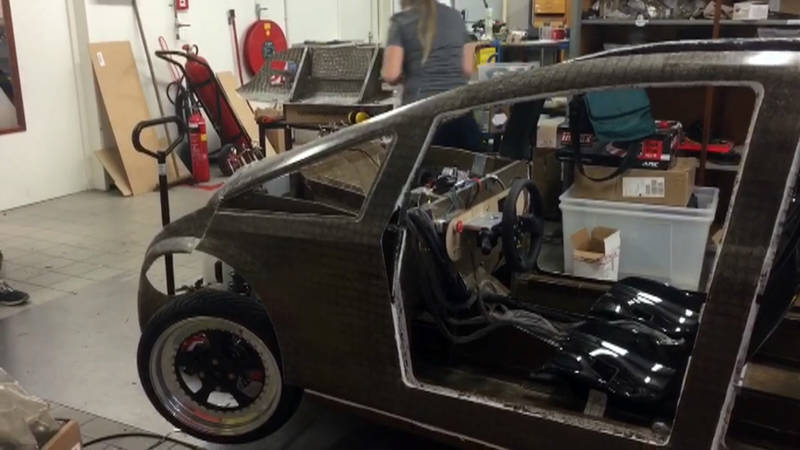Students claim breakthrough with biodegradable car

A team of students at Eindhoven University have built the world’s first fully biodegradable car using flax fibres.
‘It’s the first car in the world that can be completely recycled,’ said team member Loes van der Beuken. The students are applying the finishing touches to the car by May 8 ready for its inspection by the vehicle licensing agency RDW. They then hope to begin road trials.
‘Flax has an extremely resilient structure,’ Van der Beuken told NOS. ‘If you overlay it at different angles you can make panels that stand comparison with carbon fibre and aluminium, which are used extensively in regular car production.’
The project has won support from TomTom’s Traffic Solutions division. Its president, Carlo van de Weijer, said: ‘Yesterday’s stupid idea is tomorrow’s breakthrough. They’ve thought of something that would never have occurred to me.’
The lightweight materials used in the Lina’s construction have the added benefit of reducing its fuel consumption, but the effect is cancelled out by the greater energy needed to produce the car. The Lina has an electric motor and can carry four people.
Van de Weijer said the project was promising but it was unlikely to be rolling off factory production lines in the near future. ‘Manufacturers tend to be reticent with these sorts of experiments in house. But I’m sure they will be keeping a close eye on what the students are doing.’
Thank you for donating to DutchNews.nl.
We could not provide the Dutch News service, and keep it free of charge, without the generous support of our readers. Your donations allow us to report on issues you tell us matter, and provide you with a summary of the most important Dutch news each day.
Make a donation